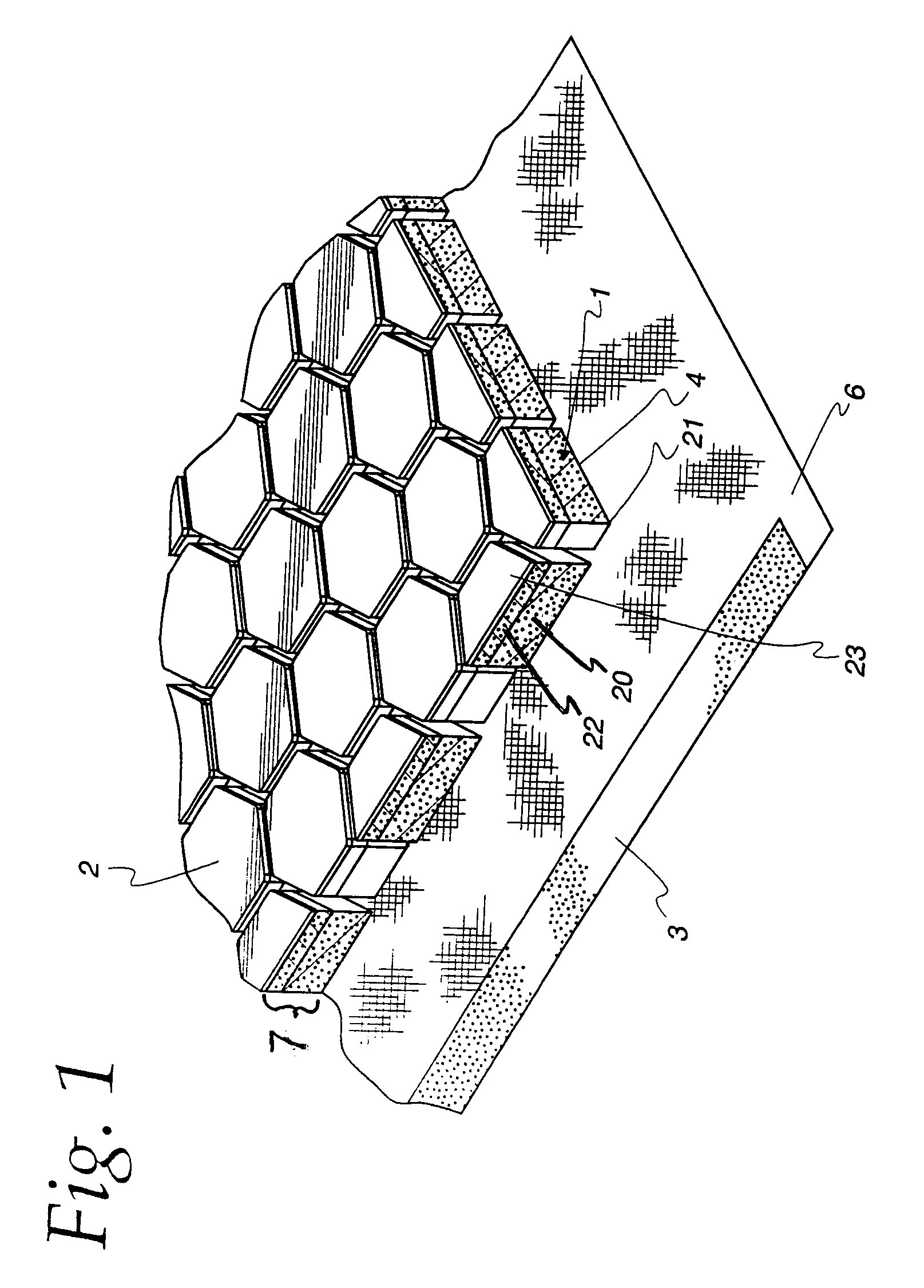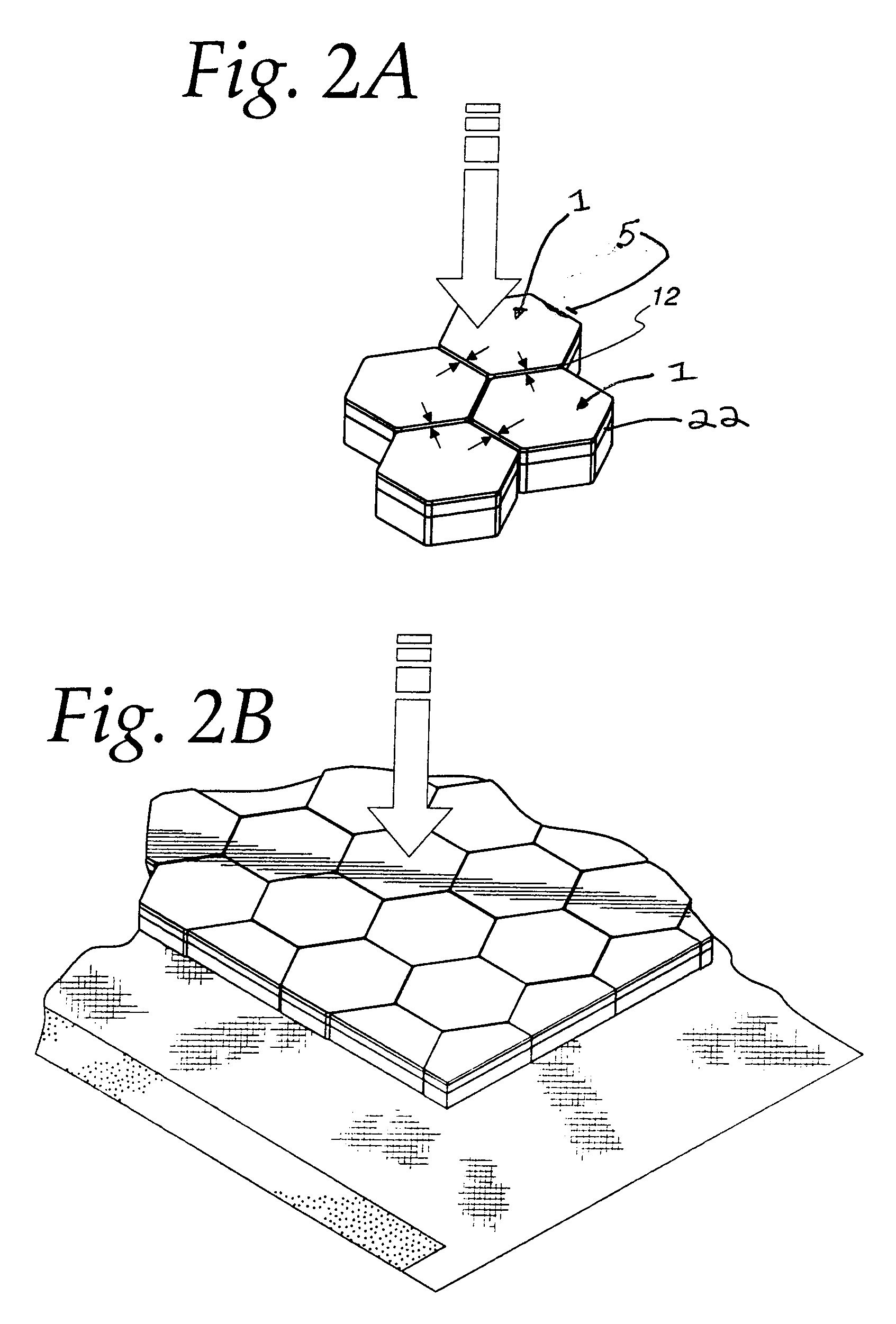Flexible Material and Method of Manufacturing the Flexible Material
a flexible material and manufacturing method technology, applied in the field of flexible materials and manufacturing methods, can solve the problems of affecting the wearer's comfort, lagging soft pads associated with hard shells, and pads with hard surfaces or shells facing the wearer, etc., to mitigate the effect of hard impact on the padding, dissipate the force impinging on the padding, and reduce the impact of hard shells
- Summary
- Abstract
- Description
- Claims
- Application Information
AI Technical Summary
Benefits of technology
Problems solved by technology
Method used
Image
Examples
Embodiment Construction
[0028]Referring to FIG. 1, the flexible material comprises a plurality of resilient multilayered hexagonal blocks 1 of a resilient closed-cell polyethylene foam, having sides of approximately 14 mm long and 12 m thick, joined with a hot melt adhesive to a fabric substrate 6. Each multilayered resilient hexagonal block is formed of two planar layers of hexagonal cross sections 2 and 4 of closed cell polyethylene foam bonded together. In FIG. 1, the layer bonded to substrate 6 is represented by the numeral 20 and the outer layer is represented by numeral 22. These layers form a laminate 7 and are referred to herein as bottom layer 20 and top layer 22 due to their positioning in FIG. 1. Top foam layer 22 has a density greater than the density of bottom layer 20, but the top layer is not as compressible as the bottom layer. In the present example both layers comprise closed cell foam. The first layer of foam should have a density of from about 30 to about 50 kg / m3, a compressibility of ...
PUM
| Property | Measurement | Unit |
|---|---|---|
| Length | aaaaa | aaaaa |
| Length | aaaaa | aaaaa |
| Length | aaaaa | aaaaa |
Abstract
Description
Claims
Application Information
 Login to View More
Login to View More - R&D
- Intellectual Property
- Life Sciences
- Materials
- Tech Scout
- Unparalleled Data Quality
- Higher Quality Content
- 60% Fewer Hallucinations
Browse by: Latest US Patents, China's latest patents, Technical Efficacy Thesaurus, Application Domain, Technology Topic, Popular Technical Reports.
© 2025 PatSnap. All rights reserved.Legal|Privacy policy|Modern Slavery Act Transparency Statement|Sitemap|About US| Contact US: help@patsnap.com



